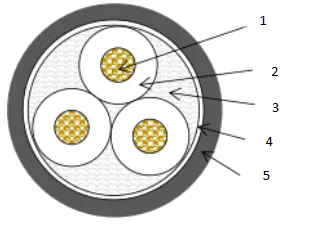Nov . 15, 2024 12:09 Back to list
rubber expansion joint price
Understanding the Price of Rubber Expansion Joints
Rubber expansion joints are essential components used in various industries to accommodate movements, absorb vibrations, and reduce noise in piping systems. They serve as flexible connectors between rigid pipes or equipment, allowing for thermal expansion, contraction, and lateral misalignment. Given their vital role in maintaining the integrity and efficiency of piping systems, understanding the pricing dynamics of rubber expansion joints is crucial for engineers, procurement specialists, and project managers alike.
Factors Influencing Rubber Expansion Joint Prices
1. Material Quality The primary material used in manufacturing rubber expansion joints significantly impacts their price. High-quality rubber compounds designed to withstand temperature fluctuations, chemical exposures, and physical wear are generally more expensive. Manufacturers often offer joints made from synthetic rubber such as EPDM, neoprene, or silicone, each catering to specific environmental or operational conditions. Choosing the right material will influence durability and therefore the total cost over the product’s lifespan.
2. Size and Configuration The dimensions of the expansion joint also play a critical role in determining its price. Larger diameter joints or those with complex configurations, such as angled or multi-arch designs, require more material and engineering expertise to fabricate. Consequently, prices will typically increase with size and complexity. Custom-made joints, designed to fit specific applications or unique system layouts, will also incur additional costs compared to standard, off-the-shelf products.
3. Pressure and Temperature Ratings Rubber expansion joints are engineered to withstand various pressure and temperature conditions. Higher-rated joints capable of handling increased pressures or extreme temperatures are often built with additional reinforcement and specialized materials, pushing their prices higher. It is essential for buyers to consider the operating conditions of their systems when selecting a joint that meets both performance requirements and budget constraints.
4. Brand and Manufacturer Reputation Like many industrial products, the reputation of the manufacturer can influence pricing. Established brands that offer robust warranties and proven track records of performance may charge a premium for their products. However, purchasing from a reputable manufacturer often means receiving reliable quality, better customer service, and product support, which can save costs associated with failures or replacements in the long run.
rubber expansion joint price

5. Volume of Purchase Pricing can also vary based on the quantity ordered. Bulk purchases may qualify for discounts, drastically reducing the per-unit price. Companies involved in large-scale projects may negotiate better rates and terms, allowing for more cost-effective procurement strategies.
Market Trends and Considerations
In recent years, the market for rubber expansion joints has experienced fluctuations due to several factors, including supply chain disruptions, changes in raw material costs, and increasing demand from various sectors, such as oil and gas, water treatment, and HVAC. Additionally, sustainability trends have urged manufacturers to develop eco-friendly options, which may affect prices as they invest in research and innovation.
Cost-Benefit Analysis
When evaluating the price of rubber expansion joints, it is essential to conduct a thorough cost-benefit analysis. While it may be tempting to opt for the cheapest option, the long-term performance and reliability of the joint should outweigh initial savings. Investing in high-quality expansion joints will often result in reduced maintenance costs, fewer disruptions, and enhanced system efficiency.
Conclusion
In summary, the price of rubber expansion joints is influenced by a multitude of factors from material quality to market trends. For those involved in the selection and procurement of these vital components, understanding these dynamics is essential for making informed purchasing decisions. By considering both immediate costs and long-term value, organizations can ensure the reliable and efficient operation of their systems while staying within budgetary constraints. Ultimately, choosing the right rubber expansion joint can lead to significant savings and operational efficiencies over time.
Share
-
Reliable Wafer Type Butterfly Valves for Every IndustryNewsJul.25,2025
-
Reliable Flow Control Begins with the Right Ball Check ValveNewsJul.25,2025
-
Precision Flow Control Starts with Quality ValvesNewsJul.25,2025
-
Industrial Flow Control ReliabilityNewsJul.25,2025
-
Engineered for Efficiency Gate Valves That Power Industrial PerformanceNewsJul.25,2025
-
Empowering Infrastructure Through Quality ManufacturingNewsJul.25,2025